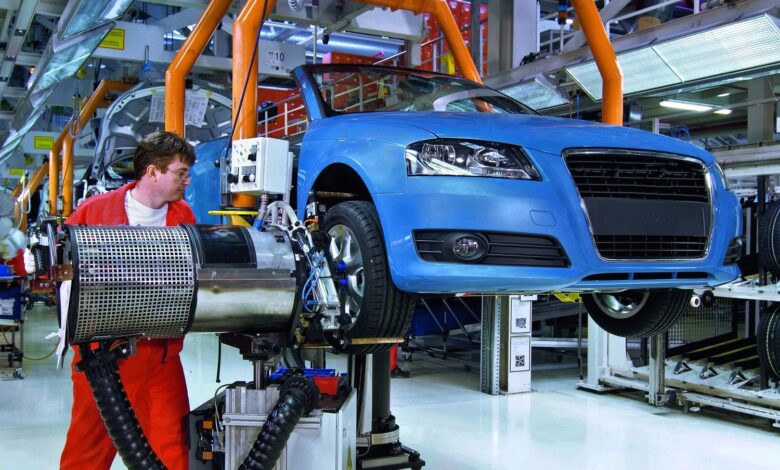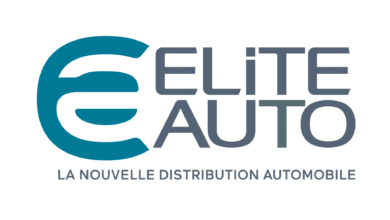How to Find a Quality Automotive Repair Shop You Can Trust

The Quality Automotive industry plays a vital role in keeping millions of vehicles on the road every day. However, the industry faces numerous challenges that make delivering quality service difficult. With the average age of vehicles increasing, the need for auto repair is growing. Yet many repair shops struggle to hire qualified technicians, invest in the latest diagnostic technology, and focus on customer service. This results in frustrated car owners who feel anxious about getting ripped off or receiving shoddy work. The demand is high for auto shops that can provide trustworthy, transparent, and Quality Automotive service.
Repair shops that want to stand out in this competitive industry must emphasize their commitment to Quality Automotive at every step. This starts with hiring ASE-certified technicians and providing ongoing training. It also means investing in state-of-the-art diagnostic scan tools and equipment to accurately diagnose issues. Shops should also have a comfortable waiting area and transparent estimate process. Most importantly, quality auto repair shops focus on continued customer service through follow-up calls and maintenance reminders. They build loyalty by educating customers on their repairs and ensuring satisfaction. With the proper training, tools, and focus on service, repair shops can gain a reputation for delivering repairs people can trust.
Challenges Facing the Auto Repair Industry
The auto repair industry faces several key challenges that impact both shop owners and customers. One major issue is a lack of trust between customers and mechanics. Many people feel anxious about taking their vehicle to a shop, worrying they will be overcharged or sold unnecessary services. This distrust stems from a history of dishonest mechanics and “upselling” tactics.
To overcome this, shops need to focus on transparency, communication, and building relationships with customers. Providing detailed estimates, allowing customers to view repairs, and taking time to explain recommended services can help build trust.
Another challenge is the skills gap facing the industry. As vehicles become more computerized and complex, there is a shortage of technicians with the diagnostic and electrical skills to service them. The average age of technicians is close to 50, and not enough younger techs are entering the field. This makes it difficult for shops to find qualified staff.
Shops can help close this gap by investing in advanced training for existing staff and partnering with schools to promote their career. Offering competitive pay, benefits, and advancement opportunities makes the field more appealing to new talent. Building a skilled, professional staff is key to delivering quality repairs customers can trust.
Importance of Quality Auto Repair
A Quality Automotive repair shop is essential for the safety and financial well-being of drivers. Poor auto repairs can lead to dangerous breakdowns, crashes, and costly repairs down the road.
When auto repairs are not performed properly, it can result in faulty brakes, steering, tires, and other critical components. This significantly increases the chances of a crash that could injure or kill the driver and passengers. Even small issues like a faulty tail light can lead to accidents in low visibility conditions.
Additionally, subpar auto repair work often needs to be re-done correctly later on. This results in the vehicle owner paying double or more for the same repair. For example, a botched transmission rebuild may function poorly or fail completely soon after, requiring another costly rebuild. Had it been done right the first time, the owner would have saved hundreds or thousands of dollars.
By choosing a Quality Automotive repair shop with trained technicians, proper diagnostic tools, and a focus on doing the job right, drivers can have peace of mind that their vehicle has been safely repaired. This protects both their safety on the road and their hard-earned money in the long run.
Hiring Qualified Technicians
Finding qualified auto technicians is a major challenge facing repair shops today. With vehicles becoming increasingly complex, it’s crucial to hire techs with up-to-date training on diagnostic equipment and new automobile technology. There are a few strategies shops can use to recruit talented technicians:
-
Partner with local trade schools and community colleges. Developing relationships with technical training programs is an excellent way to find freshly graduated techs with current skills. Many schools also offer internship and apprenticeship opportunities.
-
Attend skills competitions. SkillsUSA, Ford AAA, and other organizations hold regular competitions for aspiring auto technicians. Attending these events is a great chance to meet and recruit stand-out students.
-
Offer on-the-job training. Many talented mechanics learn through hands-on work rather than formal education. Offering paid on-the-job training can attract ambitious techs looking to expand their skills.
-
Provide ongoing education opportunities. Require or incentivize technicians to complete continuing education on new diagnostic systems, hybrid/electric vehicles, computer skills, and other emerging technologies. Ongoing training ensures technicians stay up-to-date on the latest auto repair practices.
Investing in skilled technicians who participate in ongoing education is key to delivering consistent, high-quality auto repair services. Proper training equips techs with the expertise needed to accurately diagnose and efficiently fix complex vehicle issues.
Investing in Diagnostic Technology
Advancements in automotive technology have led to more computerized and complex vehicles that require sophisticated diagnostic equipment to properly identify and repair issues. Investing in state-of-the-art diagnostic tools is essential for auto repair shops to keep up with newer makes and models.
Computerized diagnostic systems have become a vital part of auto repair. These scan tools can quickly read a vehicle’s on-board diagnostics computer to accurately pinpoint problems. By plugging into a port under the dashboard, a diagnostic scanner can gather engine data and trouble codes. This takes much of the guesswork out of determining what is wrong with a vehicle.
Professional grade scanners from manufacturers like Snap-On and Bosch provide comprehensive information from a vehicle’s computer. Techs can view sensor data, activate systems, and perform tests to diagnose issues. These scanners provide detailed trouble code definitions and offer tips for resolving problems. Some can even perform advanced programming and recalibrations of vehicle computers and control modules. Investing in high-quality scan tools helps technicians efficiently diagnose issues the first time around.
Shops should also invest in specialty tools for working on specific vehicle makes or systems. For example, European and Asian vehicle manufacturers may require unique scanners to read proprietary diagnostic systems. There are also dedicated tools for testing brake, transmission, suspension, air conditioning, and other individual components. Equipping technicians with specialty scanners and tools for different vehicle systems ensures they can accurately diagnose any issue.
By leveraging the latest diagnostic technology, repair shops can expertly pinpoint problems while providing transparency to customers. Scanning tools are an essential investment for Quality Automotive repair in today’s high-tech vehicles. Proper diagnostics allow technicians to recommend appropriate solutions and give customers confidence in the work performed.
Providing Transparent Estimates
Trust is crucial in the auto repair business. Customers want to feel confident that the shop has their best interests in mind. One way to build trust is by providing transparent estimates upfront.
The estimate should clearly lay out the work being proposed, including a breakdown of parts and labor charges. There should be no hidden fees or surprise add-ons later. The shop should thoroughly communicate what is included in the estimate and gain the customer’s approval before starting service.
Customers appreciate when a shop takes time to explain its pricing. Labor rates can vary based on technician experience, shop location, and the complexity of the job. Parts costs also depend on the vehicle make, model, and necessary replacement components. Taking time to walk customers through the estimate shows good faith.
Shops should avoid trying to pad the estimate with unneeded services. Recommending excessive repairs or pushing for premium parts when standard ones will do is an unsavory practice. Customers will recognize when a shop is transparent versus trying to inflate costs.
Providing clear estimates upfront is the best policy for building lasting relationships. When customers understand what they are paying for, they are more satisfied with the service. Developing a reputation for fair and transparent estimates will earn customer loyalty and positive word-of-mouth.
Focusing on Continued Customer Service
Building and maintaining strong relationships with customers is key for auto repair shops aiming to provide quality service. This involves not just performing repairs properly, but following up after the fact and forging lasting bonds.
Following Up After Repairs
Once a customer’s car is repaired and returned to them, it’s important for the shop to follow up to ensure complete satisfaction. Technicians should call customers a few days later to check if everything is still working properly or if any new issues have appeared. This shows the customer that the shop truly cares about fixing their car right the first time, not just taking their money and sending them on their way. Taking a proactive approach to follow-ups demonstrates good faith and a commitment to standing behind the work performed. It’s a chance to catch any problems early and prevent frustrated, dissatisfied customers.
Building Long-Term Relationships
In addition to post-repair follow-ups, repair shops should focus on building lasting relationships with customers for repeat business. This starts with providing a quality repair experience that makes customers want to come back. Beyond that, shops can send periodic emails or mailers with coupons and special offers to encourage return visits. They can launch customer loyalty programs with rewards to cement bonds. And they can make customers feel valued by remembering them and providing personalized service. The goal is to become customers’ trusted auto service provider for the long haul. Quality Automotive shops recognize that retaining customers is cheaper and more profitable than acquiring new ones. So they prioritize customer relationships as much as the mechanical work itself.
Maintaining a Comfortable Waiting Area
A comfortable waiting area is essential for putting customers at ease while their vehicles are being serviced. Auto repairs can be stressful, but a relaxing environment helps alleviate anxiety. Here are some tips for creating a welcoming waiting room:
-
Offer amenities to make the wait more pleasant. Provide free Wi-Fi so customers can work or browse the web. Offer complimentary refreshments like coffee, tea, or bottled water. Keep the area tidy and stock magazines for reading.
-
Decorate the space in a homey, inviting style. Use warm colors, comfortable seating, and decor elements like plants or artwork. Soft lighting and music also promote relaxation.
-
Maintain excellent communication with customers about wait times. Greet them upon arrival and explain next steps. Provide timely updates if repairs are delayed.
-
Provide a kids’ area with toys if possible. This gives parents one less thing to stress about.
-
Have a TV in the waiting area tuned to a channel like HGTV or Food Network for passive entertainment.
-
Make sure the temperature is comfortable, not too cold from blasting AC.
-
Have a customer service agent available to answer questions or address any concerns during the wait.
With a welcoming waiting room, customers can feel at ease instead of anxious. This transforms an auto shop visit from a dreaded necessity to an experience they look forward to.
Following Industry Best Practices
One of the most important things an auto repair shop can do is follow industry best practices. This ensures customers receive quality repairs performed to the highest standards. Two key ways shops can follow best practices are:
Getting ASE Certifications
One best practice is for technicians to get ASE (Automotive Service Excellence) certifications. ASE certifications demonstrate that a technician has passed rigorous exams testing their knowledge in specific auto repair areas. There are tests for areas like engine repair, brakes, electrical systems, and more. Technicians can get certified as ASE Master Technicians by passing exams in all areas. Customers should look for the ASE Blue Seal of Excellence when choosing a shop. This shows the shop employs certified techs.
Continuing Education Requirements
Another best practice is requiring ongoing training and education for technicians. As vehicle technologies rapidly evolve, technicians must continuously update their skills. Many shops now require techs to complete a minimum number of training hours each year. These can include classes, seminars, online courses, and training on new diagnostic equipment. Continuing education ensures techs stay up-to-date on the latest advancements and repair techniques. This is critical for properly servicing today’s complex vehicles.
Following industry best practices like ASE certifications and continuing education demonstrates a shop’s commitment to quality auto repairs performed to high standards. This gives customers confidence in the work being done on their vehicles.
Conclusion
As we’ve explored, the auto repair industry faces several challenges in delivering Quality Automotive service to customers. However, by focusing on hiring qualified technicians, investing in diagnostic technology, providing transparent estimates, and maintaining excellent customer service, repair shops can stand out from the competition.
The key to Quality Automotive repair lies in technicians having up-to-date training, shops having state-of-the-art diagnostic tools, and a focus on clear communication and transparency with customers. When customers feel informed, heard, and cared for, they will return again and again.
For car owners, finding a shop that meets high standards for training, technology, and customer service is essential. Ask around for recommendations from friends and family. Look for ASE certifications. And don’t be afraid to ask questions upfront about pricing, warranties, and mechanics’ experience. A Quality Automotive shop will appreciate an informed customer. With a bit of research, you can find an auto repair shop you can rely on for all your vehicle servicing needs.





